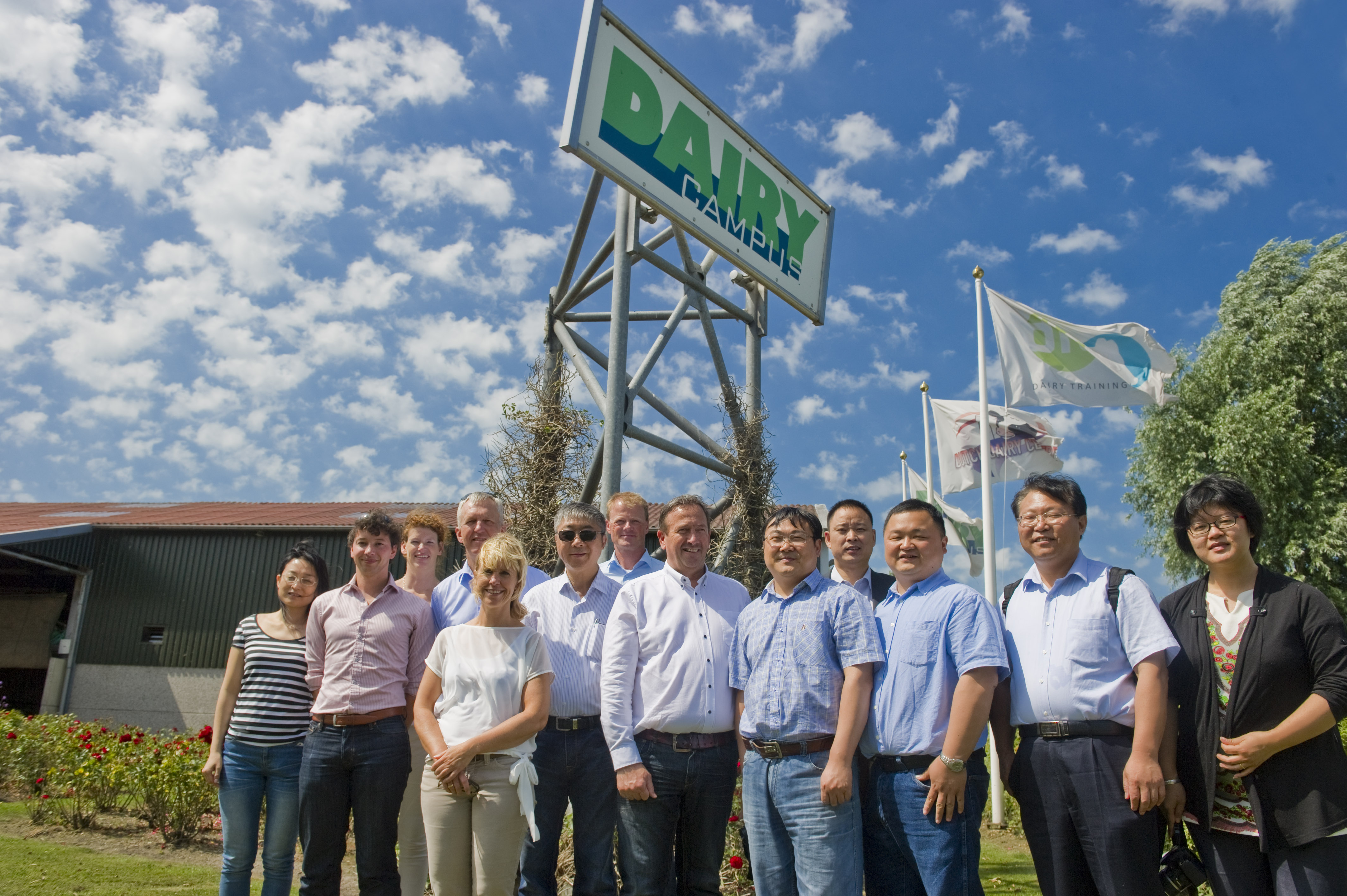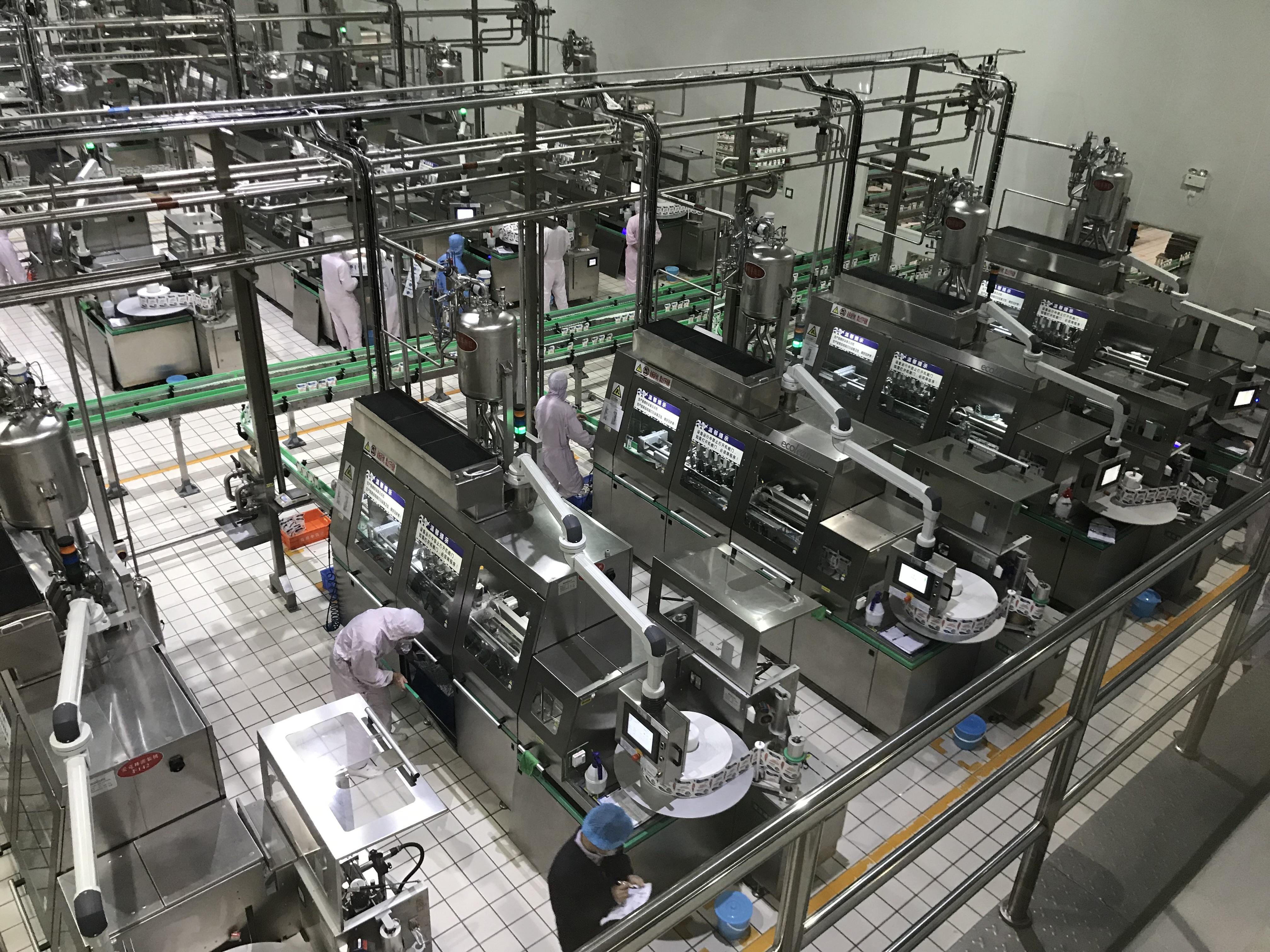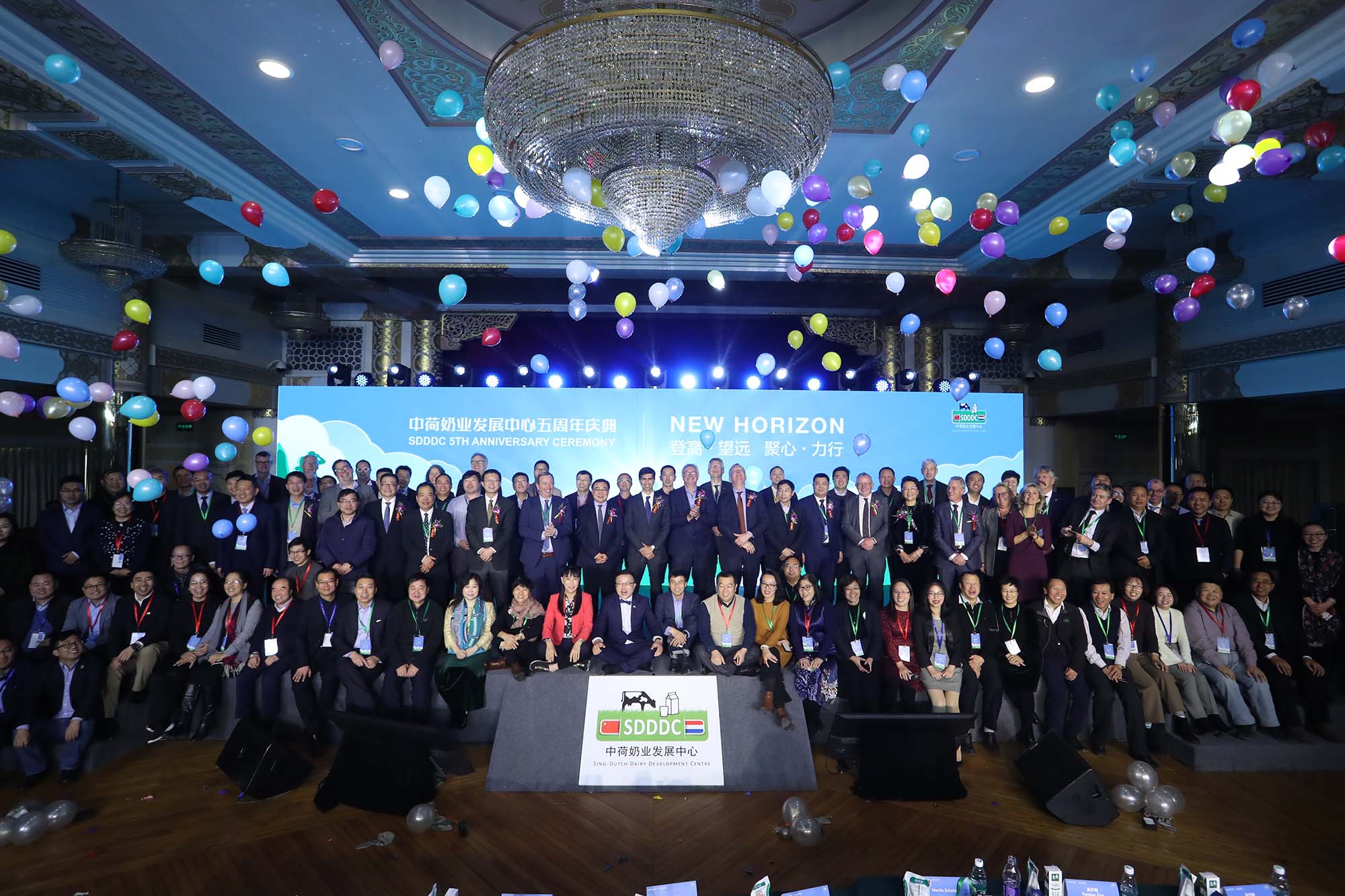
Interview
Collaboration with Chinese Partners: Sustainable Milk for All
It is incredibly useful to collaborate with China — one of the largest and most influential countries in the world — on an academic level, but it sometimes raises questions as well. In this six-part interview series, we discover exactly how this collaboration works and what it yields for its Wageningen and Chinese partners. Part 5: Kees de Koning – Innovation Manager at WUR's Dairy Campus in Leeuwarden.
Dairy and China: is that a logical combination?
"Yes, it is now. Little dairy was consumed in China until the beginning of this century. In villages, many households used to have one or two cows in their courtyard. That has since changed. Although there are still small farms, now they have mostly large modern farms with thousands of cows — up to 20,000 in eight barns — where the milk is processed directly on site.”

Why is dairy popular now?
“The Chinese like to use an example from the West. They believe that the Dutch are so tall because they drink a lot of milk and even that the Japanese are taller thanks to dairy; they wanted that too. At the beginning of this century, the Chinese government decided to invest in dairy and dairy cattle.
Chinese people now consume 50 billion litres of milk a year; 20 years ago it was not even 8 billion litres’
They moved the small farms in villages to the outskirts of the village, where they could be run more efficiently, and the resulting odours caused less of an issue. And large dairy processing companies were set up, like Yili and later Mengniu as well. Chinese people now consume 50 billion litres of milk a year; 20 years ago it was not even 8 billion litres.”
And it’s all their own milk?
“Most of it is: around three-quarters of the milk comes from China, specifically the high plains of Inner Mongolia. The rest is brought in from abroad: from companies like Nestle, Fonterra (editor’s note: New Zealand), FrieslandCampina, but also partly via foreign dairy companies that have been taken over by Chinese companies.”
Those companies don’t have locations in China?
"To some extent, yes, but it is not that easy to build dairy plants and collect milk from local farms as a foreign company. You need permission from the government and Chinese partners who want to work with you within the dairy chain. FrieslandCampina therefore focused mainly on collaboration through their Dairy Development Programme, where they use their 150 years of experience to assist other countries.
Initially our collaboration focused on food safety: after the melamine scandal from 2008
That was why they came knocking at WUR’s door nine years ago. At the time, Wageningen already had good contacts with China Agricultural University (CAU) in Beijing, resulting in the Sino-Dutch Dairy Development Centre, an expertise centre where academics from CAU and WUR — including the Dairy Campus that I’m part of — collaborate as well as several Dutch and Chinese businesses in the dairy chain, both upstream and downstream.”

What kind of knowledge does China need?
“Initially, the SDDDC primarily focused on food safety: you probably remember the melamine scandal from 2008. In order to boost protein content, melamine was added to the raw milk and in turn, ended up in baby formula as well. Chinese consumers lost confidence in their own milk powder and bought up our formula en masse. Such contamination is no longer possible due to the quality control measures that have been implemented, and confidence in locally produced milk has largely been restored.”
So you have made the Chinese milk safe again?
"They did that themselves, but we do have a lot of experience in the Netherlands with dairy quality and quality assurance. This goes beyond simply the exclusion of additives in the end product, but also, for example, involves the feed and medications that cows are given. If you give cows antibiotics, you also kill the lactic acid bacteria and you cannot process that milk into products like yoghurt.”
How does WUR benefit from collaboration with Chinese partners?
"From the beginning, we have focused on joint research and talent development through a PhD programme. Since the start SDDDC has supported nine PhD candidates, five of which have been successfully graduated already.
Until a few years ago, the manure was just fermenting in the squares, now emissions are an issue
There is a wide range of themes: from food safety, milk quality and storage life to heat stress in cows and greenhouse gases in the Chinese dairy industry. This knowledge is sometimes not immediately useful for the dairy sector in the Netherlands, but it is valuable in countless other growing markets in the world comparable to China such as Africa where WUR is active as well.
Why is the collaboration in the SDDDC so successful?
“I think because the Sino-Dutch Dairy Development Centre is based on the ‘triple helix model’ that we successfully practise in the Netherlands. Collaboration between scientists, companies, and the government is not common in China. The central government has much more influence on what happens in the business and scientific communities, while the knowledge of scientists and the experiences in practice also lead to improvement.”

But does the Chinese government participate in a consultation model like the SDDDC?
“No, they don't. But you can certainly hear the voice of the Chinese government in the input from Chinese companies and scientists.”
Are the scientists that WUR collaborates with actually independent then?
“When we hear that Chinese scientists are closer to the government than we are, we quickly assume they are not independent, but that is definitely not the case. CAU employs very good scientists who are internationally renowned. SDDDC director Li Shengli is a professor there and certainly an authority within the Chinese dairy chain. And although the relationship between government and science seems to only be top-down, that is not the case: academics successfully bring their new insights to the attention of the government and in the five-year plans.
WUR has no influence on the growth of the Chinese dairy market, but we can play a role in strengthening sustainability’
That’s how things like the environment and sustainability end up on the agenda as well, causing the government to take action against environmental pollution by dairy farms, for example. Until a few years ago, the manure was just fermenting in the squares and emissions were not an issue — now they are.”
You often hear nowadays: producing as little dairy as possible is the most sustainable. So why is WUR helping to increase that market in China?
“I am convinced that dairy production and sustainability can go hand in hand. But even if you think otherwise: the fact is that dairy is a booming industry in China: baby formula, milk, yoghurt drinks. And cheese, mainly for hamburgers and pizza. The more exclusive varieties such as Grana Padano and Emmenthaler are only affordable for wealthy Chinese, but that group is also growing rapidly. WUR has no influence on the growth of the Chinese dairy market, but we can play a role in strengthening sustainability. Given the size of the country, this is an urgent task and we are fully committed to that.”

How do you see the effect of WUR's efforts?
“In eight years' time, the focus has shifted from food safety to sustainability. In 2021, the SDDDC organised several webinars, including one on greenhouse gases and one on the importance of biodiversity, to which the World Wildlife Fund’s Chinese division also contributed. Until recently, addressing such themes would have been unthinkable, and now three to four thousand Chinese from the dairy industry are participating in these online meetings. I don't know if they all apply it in practice, but sustainability starts with awareness. The SDDDC has clearly achieved the status of a think tank: we are taken seriously.”
What are the next steps?
“The triple helix approach will continue. Our Chinese colleagues are now working with the Chinese government and various companies in the agri-food sector to establish the Jingwa Science & Technology Innovation Center in Beijing, which is modelled on our Dairy Campus in Leeuwarden. In China, this is seen as an example for successful collaboration between companies and research institutions. In the Jingwa Center, CAU and WUR will work together within the full scope of agri-food: from horticulture in greenhouses to fruit cultivation (editor’s note: peaches) and also dairy. Because in all these areas we can complement each other in our search for more sustainable and efficient production systems.”
Read more about the collaboration
- More information about the collaboration between WUR and Chinese partners:
- December 17, the Sino-Dutch Dairy Development Center (SDDDC) celebrates its eighth anniversary. Read more on the SDDDC website.
Facts & figures
- WUR has been working with Chinese knowledge institutes since the early 1980s.
- In 2020, 450 students from China were awarded their master’s degree from WUR.
- 363 of the 2,200 PhD candidates at WUR are from China, making them the biggest group of foreign PhD candidates by far. Germany holds second place with 93 PhD candidates.